
views
Preparing for Your Nose Piercing

Check with your parent and/or employer. If you’re under 18, you may need your parent’s permission to get the piercing. They will have to go with you to sign a consent form. If you are over 18 and hold a job, check with your employer about dress codes. Also, if you go to a private school, you’ll want to find out if face piercings are acceptable. EXPERT TIP Sasha Blue Sasha Blue Professional Body Piercer Sasha Blue is a Professional Body Piercer and the Owner of 13 Bats Tattoo and Piercing Studio in the San Francisco Bay Area. Sasha has over 20 years of professional body piercing experience, starting with her apprenticeship in 1997. She is licensed with the County of San Francisco in California. Sasha Blue Sasha Blue Professional Body Piercer Before you get a nose piercing, consider whether you have any allergies that might interfere with the healing process. It's best to avoid getting your nostril pierced if you have a cold or allergies, because blowing your nose is no fun with a fresh nostril piercing.

Research a quality piercer. Don’t go looking for a bargain. You don’t want to risk anything going wrong. Instead, ask around. Word of mouth is a great way to find a reputable piercer. If no one knows of anyone, start looking some up online. Go into the shop and get to know your piercer before you decide. Ask them about previous piercings that they've done, if there were every any issues, and how long they've been doing them. Sometimes, they’ll even have a photo album for you to look through. Ask to see certificates that their Autoclave has passed spore tests. If they do not have an autoclave, leave immediately. The shop should be clean and sanitary. Some piercers are registered with the APP. Whilst this ensures they should be sanitary in their work, it does not mean that they do good piercings. Always check feedback of their customers and do not assume that an APP certificate means that they are a good piercer.

Gather the proper paperwork. You’ll need to bring your license for sure. Some states require a birth certificate as well. The laws change from state to state, so check about the law in your area.
Getting the Piercing

Watch your piercer. If they take you into a room without sufficient lighting, question it. They should be able to see what they are piercing. Also, watch them wash their hands and put on sterile gloves. If they already have gloves on, you are completely justified in asking them to re-wash their hands and replace the gloves with new ones.

Sit still. While you’re getting your nose pierced, try to stay as still as possible for your piercer. It is a small pinch just like any other piercing, and you’ll only feel it for a second.
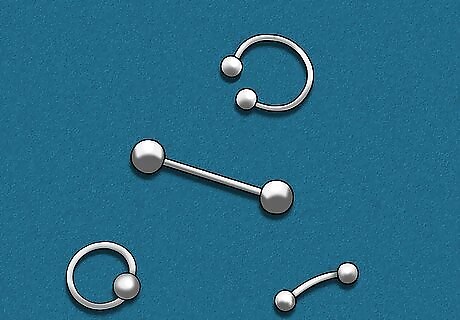
Use implant grade material. Titanium and surgical steel are good substitutes, but most piercers include the price of a surgical steel piece of jewellery in the price of the piercing. If you ask for gold, titanium, and niobium (niobium is the material least likely to irritate your skin) the piercer may add an additional cost.
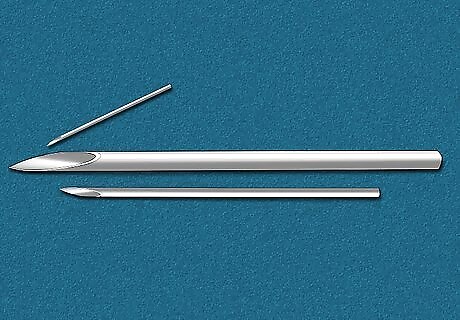
Use new needles. The needles that they use should be brand new and in sterilized sealed pouches. You should see them open the sealed packages. If you get into the room and the needles are already open, you are once again justified in asking for new ones.
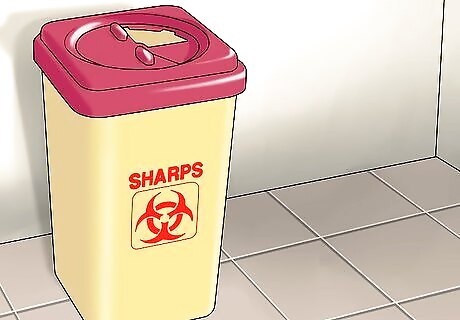
Throw away the needles. Your piercer should throw away the needles in a biohazard container after using them. They should also provide after-care instructions at this point. Most piercing salons will carry the cleaner that they are going to recommend to you.
Caring for the First Three Months

Wash your hands. You should be cleaning your piercing twice a day for the first three months. Before touching it, it is essential that you use antibacterial soap to wash your hands thoroughly. Skipping this step is often the cause of infection.
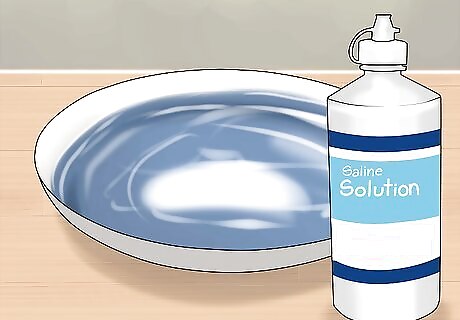
Use saline solution. A saline solution is a mixture of warm water and non-iodized sea salt. Your piercer can either sell you some from the studio, or he can tell you where to buy it. When you use it, it should be the temperature of a drinkable hot beverage. Place it in a microwaveable cup and heat it in 10 second increments. Once it is the correct temperature, take a sterile tissue and dip it into your solution with clean hands. Generously wipe down your piercing with the solution. The optimum time for your saline solution is right after you shower. Do not reuse the same cup of solution.
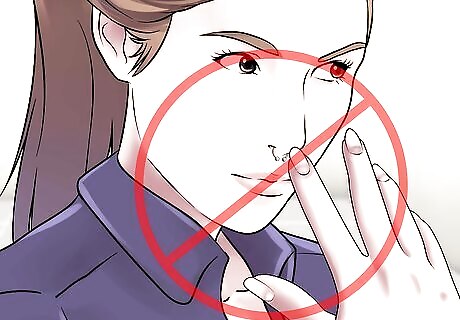
Don’t play with the piercing. Throughout the day, resist the opportunity to play with your nose ring. Your hands are constantly covered in bacteria and this is a great way to get an infection. If you notice any build-up around the ring and you don’t have your cleaning solution with you, wash your hands and soak the piercing for a few seconds in warm distilled water until the build up easily comes away. Do not move the jewellery in and out, as this may cause hypertrophic scarring. EXPERT TIP Sasha Blue Sasha Blue Professional Body Piercer Sasha Blue is a Professional Body Piercer and the Owner of 13 Bats Tattoo and Piercing Studio in the San Francisco Bay Area. Sasha has over 20 years of professional body piercing experience, starting with her apprenticeship in 1997. She is licensed with the County of San Francisco in California. Sasha Blue Sasha Blue Professional Body Piercer Our Expert Agrees: It can take anywhere from 2-6 months for a nose piercing to heal. To help it heal more quickly, don't play with the piercing and don't sleep on that side. Watch out for towels, as well, as they can snag on jewelry.
Watching for Infection

Know what’s normal. Redness and swelling is natural. Also, it may notice some pain the following days. This is normal. Don’t worry about these, but make sure you continue cleaning your piercing properly.
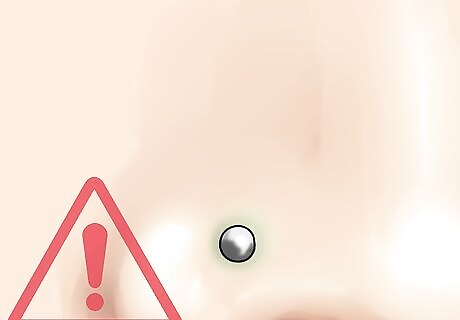
Watch for green and yellow. If the painful inflammation continues, watch for discharge from the piercing. If it the discharge is green or yellow and smelly in nature, seek medical attention. This combination could mean infection.
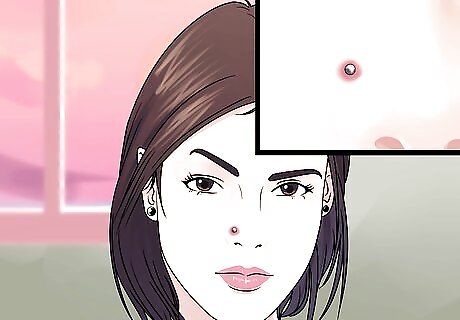
Look for a red raised bump. This bump can occur within a few days or months after the piercing. Not all bumps are infected but if they’re red and resemble a pimple with pus inside, they likely are. Pus is not always a sign of infection, but get it checked with a doctor just in case. DO NOT remove the piercing if it is suspected to be infected, as this traps the infection and will likely have to be drained. Always ask your doctor before removing jewellery of an infected piercing.
Caring After Switching Jewelry
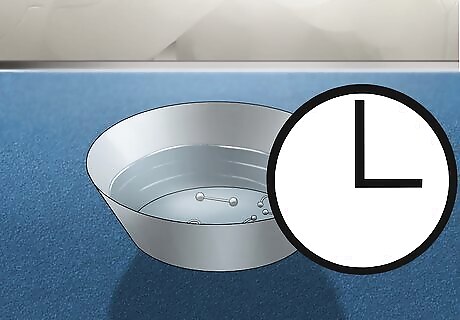
Use clean jewelry. Three months after your piercing, it should be healed and you will be able to put a different nose-ring in. It is best to get jewellery that has been autoclaved (sterilised with a combination of gas and pressure) and sealed in a pouch. If it has been touched by other people before being inserted, put it in boiling water and wait for the water to cool before removing the jewellery and inserting it into your nose.
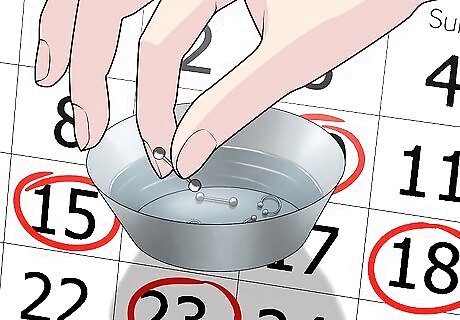
Continue to clean regularly. Now that your piercing has healed, you don’t need to clean it twice a day. You can gradually work your way down to cleaning it a couple times a week. Instead of your saline solution, make sure you’re washing it in the shower. Do so with a face cloth (cleaned regularly) and antibacterial soap.

Be careful with face make-up. When putting on face make-up try to avoid your piercing. The chemicals can build up in your piercing hole.



















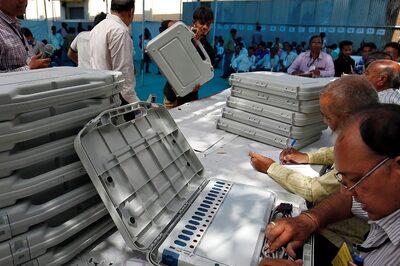
Comments
0 comment